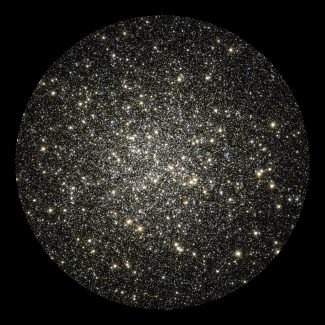July Viewing Features Globular Clusters
By
Westmont

The Great Hercules Globular Cluster, Messier 13, will dazzle viewers at a free, public stargazing event with the powerful Keck Telescope Friday, July 20. The sun will not set until after 8 p.m., making the best viewing after 9 p.m. The observatory opens its doors to the public every third Friday of the month in conjunction with the Santa Barbara Astronomical Unit, whose members bring their own telescopes to Westmont for the public to gaze through. The viewing lasts several hours. In case of overcast skies, please call the Telescope Viewing Hotline at (805) 565-6272 and check the Westmont website to see if the viewing has been canceled.
Thomas Whittemore, Westmont physics instructor, says other globular clusters will be high in the night sky for the July viewing, including Messier 3 and 92. The remnants of a dying star in the constellation of Lyra, the Harp, will be on tap as well.
“This is the famous Smoke Ring Nebula, Messier 57,” Whittemore says. “Our own Sun, which will become a white dwarf, will enter this particular stage at the end of its stellar career. This stage in our Sun’s life, however, is many billion years away.”
A reasonably bright collection of nearby galaxies located in the constellation of Ursa Major may also be on the celestial viewing menu, including Messier Objects 101, 51 and 63, the Pinwheel, Whirlpool and Sunflower Galaxies. “These galaxies lie between 27 and 37 million light-years from Earth,” Whittemore says. “Since a telescope is a time machine, the light from these large galaxies has traveled 27 to 37 million years to reach our eyes — the Earth was a very different place when this light left its source.”
The Keck Telescope is housed in the observatory between Russell Carr Field and the track and field/soccer complex. Free parking is available near the baseball field.
Filed under
Campus Events, Campus News, Faculty and Staff, Press Releases